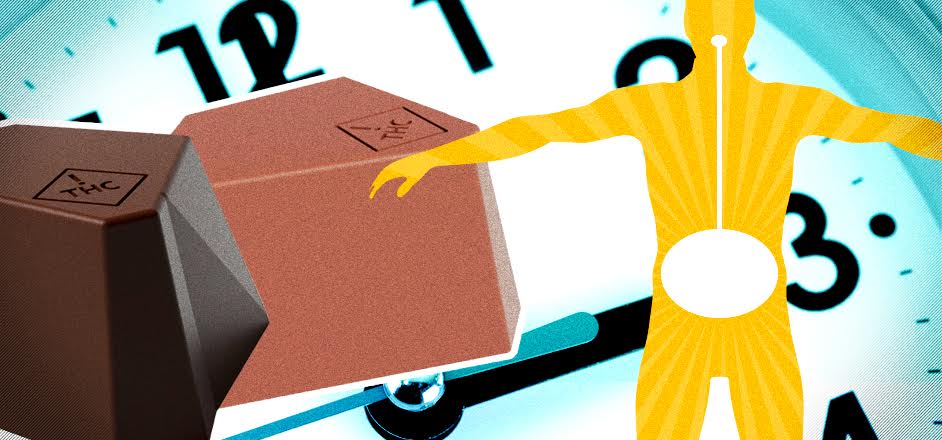Although the high of smoked and vaped cannabis comes on almost as soon as you exhale, the story is not the same for edibles.
Instead, edibles come with a problem, a problem that’s infamously known in the science community as the "These-Aren't-Working-I'm-Gonna-Eat-More-Oh-Shit-Now-I-Want-to-Go-to-the-Hospital” conundrum. You know the one, right? The one where you feel nothing after eating an edible, then three hours later, it hits you like a train going 420 m.p.h?
Long been accepted as unchangeable and "just how edibles work!," this little issue has sent everyone from Maureen Dowd to our own writer Isabelle Kohn to some pretty (hilariously) dark places.
However, a new solution looms bright on the horizon. The edibles problem is being solved by enterprising cannabis companies using high-tech methods to re-jigger pot at a microscopic level so it torpedoes into your bloodstream and brain with Flash-like rapidity. Fast-acting weed is finally here.
For the dispensaries that would carry this fast-acting new bud, there’s a big market opportunity here — just like in hamburgers and internet service, there's lots of cash to be made by being fast.
First to market is a Colorado company called 1906, which uses a technique called microencapsulation to make edibles that start working in a lightning-fast 15 or 20 minutes.
The feeling peaks about an hour, according to company head Peter Barsoom, who left a job in finance to invent a quicker high. Barsoom explained that microencapsulation coats the THC, CBD and terpenes in little fat globules, which the body can absorb more quickly. Big Pharma actually uses this method all the time.
1906's resulting product, rapid-onset chocolates, are already on shelves, already preventing people from overdosing and hiding in the closet.
"Or wherever it was that they used to hide out," Barsoom says.
Coming this spring will be products from a company called Nanosphere Health Sciences; it's a skin gel called Evolve that COO David Sutton says will take effect in just 10 short minutes. They're using nanoencapsulation — similar to microencapsulation, but even smaller — to do it.
Sutton knows about the need for lightning quickness. He once had a these-aren't-working-I'll-take-more-shit-that-was-too-much moment so "unpleasant" he stayed off cannabis — all types of cannabis, everywhere — for years. Now he's back.
The race to be fast didn't just start this season, though. Ryan Murphy, a budtender at Breckenridge Organic Therapy, can, like many cannabis lovers, enumerate a detailed hierarchy of how rapidly various products get you turnt. Products such as Quigley's and Highly Edibles already advertise themselves as fast-acting.
"You’re always just a few seconds away from experiencing the Quigley’s effect," says the company's website.
These products are so popular, that getting a faster come-up is now an intense industrial effort and companies are getting rich off it. Alexey Peshkovsky is a PhD and co-founder of the machine maker Industrial SonoMechanics who has long worked on getting pharmaceutical drugs to deliver their effects faster.
The techniques Big Pharma uses to create fast-acting drugs also work on cannabis, he says. His equipment blasts very intense ultrasound at cannabis to force the cannabis oil to mix with water, which is better absorbed by the body. This is often used on cannabis drinks, which come on in a half hour or 45 minutes, or even as fast as 15 or 20 minutes, while edible take an hour.
The science may be complex — too complex for the average ent to understand. But, among companies, demand for these machines is intensifying, Peshkovsky says. A year and a half ago, making machines that make quicker cannabis was 5 percent of their output. "Now it's probably 80 percent of what we do," he says.
How big can these companies get? And how fast can edible or topical cannabis come on? Everyone agrees they can probably get even faster. The demand is there for this young field, and the technology is catching up.
Says Sutton, the COO: "I honestly think we are on the very edge of what this plant can do. The opportunities are boundless."
[originally published November 14, 2017]



Leave a Reply
You must be logged in to post a comment.